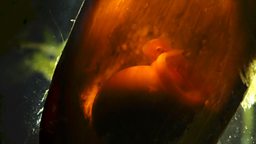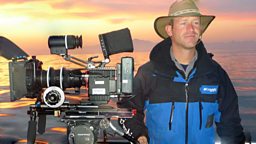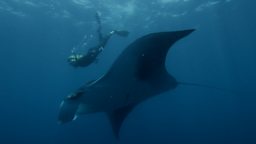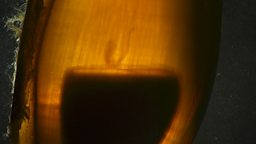The art of filming shark eggs
Simon Blakeney, producer
One of the most fascinating shoots for ‘Shark’ wasn’t actually anywhere exotic – the location was a small, damp, darkened room in the Midlands. By setting up a tiny filming studio behind the scenes at the National SeaLife Centre in Birmingham, we were able to get a unique and privileged view actually inside a shark’s egg. We were able to show, with incredible detail, how the embryos develop into fully formed sharks.
We were able to show, with incredible detail, how the embryos develop into fully formed sharksSimon Blakeney
Some sharks give birth to live young – but others lay spectacular eggs. The eggs vary from the spectacular corkscrew shapes of the Port Jackson shark to mermaid’s purses or even eggs suspended by spiralling fronds. These eggs are complete life support systems, containing everything needed for the embryo to develop into a fully formed shark ready for a life as a hunter. Filming this development was a huge challenge – the embryo is only a millimetre wide at first and filming it in the wild just wasn’t possible.
At first the tiny embryos were dwarfed by the gigantic egg sac, but using specialised super macro lenses they were even able to film the individual blood vessels within the gills.
Working with curator James Robson and his team of aquarists, shark eggs from the aquarium were carefully cleaned and then placed in a special, temperature-controlled filming tank, which kept the eggs healthy while filming was taking place. Lighting them involved carefully placed, waterproof fibre-optic lights, to allow the cameras to see through the tough, but translucent skin of the eggs. By working closely with the aquarists and filming with eggs from three different species, and at different ages, we were able show sharks as they grew.
We followed them from tiny embryos, dwarfed by the yolk sac, to their bodies developing fins, eyes and mouths, to the stage where they had to stay tightly curled up, with almost no room to move, inside the protective egg case. They were then ready to hatch.
After their starring role, all the hatchlings went on to live at the aquarium in Birmingham, and other aquaria in the UK.
Achieving these shots took many, many hours of patient observation and was only possible with the help of the expert aquarists working in such precisely controlled conditions. But the results were both fascinating and eerily beautiful!








